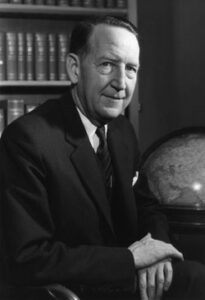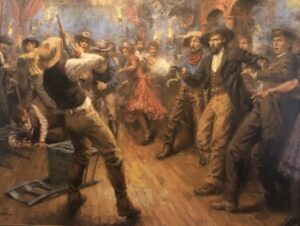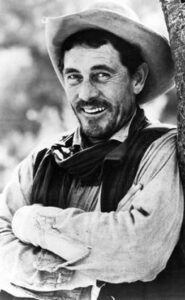Welcome to the John Rawlings Heritage Center and Museum. Glimpse into some of our featured exhibits and meet just a few of the heroes and scoundrels that shaped our past.
Arkansas Valley Farming and Ranching
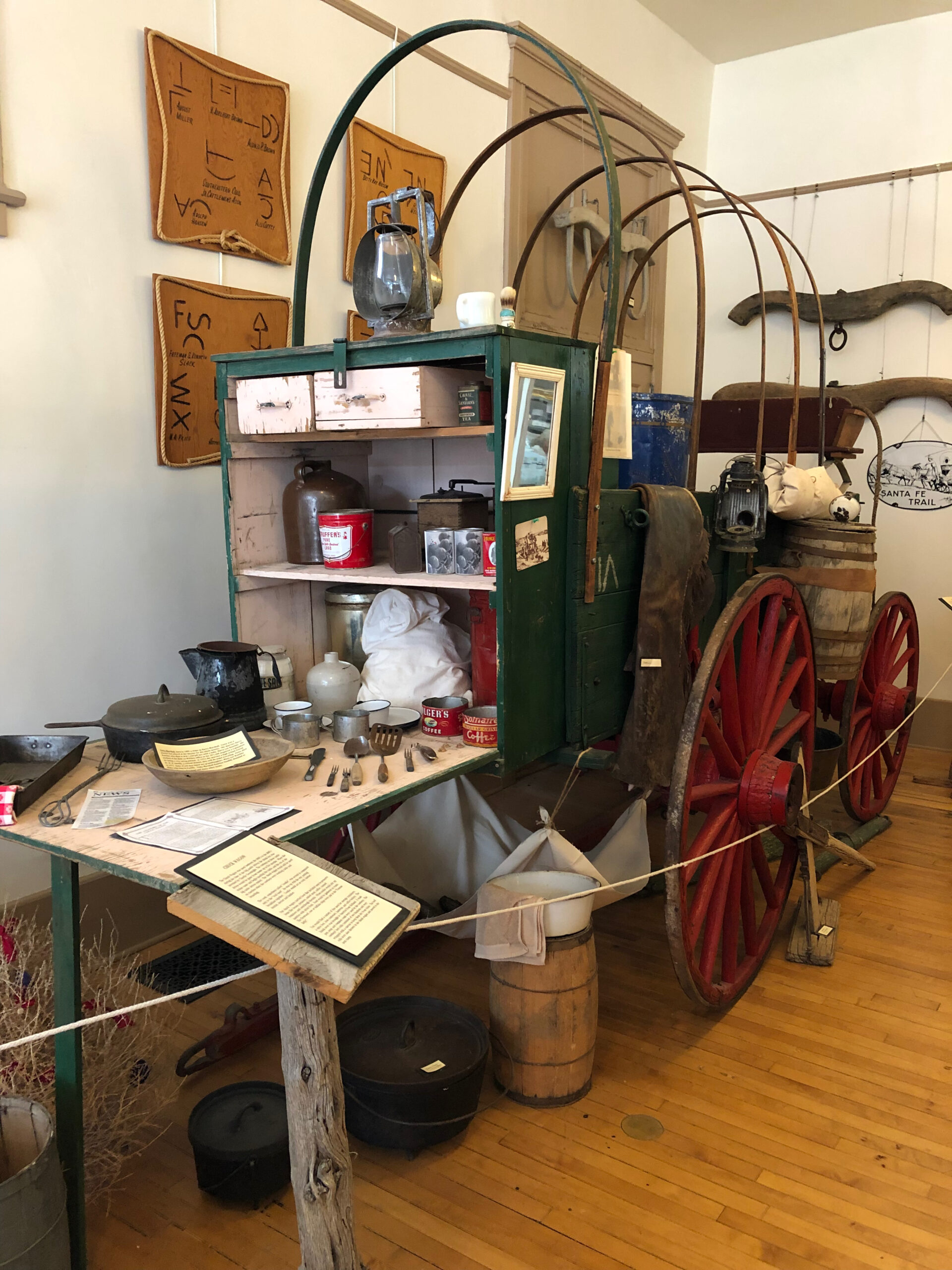
Did you know legendary frontier cattle baron, Charles Goodnight, developed the original chuck wagon? What may be the earliest version of today’s RVs and motor homes, it carried everything ten men might need on a prairie voyage lasting five months or more. There was storage for bulk foods, bedrolls, water barrels and tools, but it was the kitchen that made Goodnight’s wagon unique. Perched at the rear of the wagon and facing aft, it had a hinged lid that let down on a swinging leg to form a worktable. It was honeycombed with drawers and cubbyholes to hold utensils, pots, pans, a first aid kit, sewing needles and of course, the all-important coffee pot and whiskey cask.
Visit our agricultural and ranching displays to learn the stories of our early cattle, sheep and dairy ranches. Imagine yourself traveling behind dusty cattle herds, tossing cow chips into the “possum belly” of the chuck wagon or perhaps driving a horse-drawn beet puller harvesting sugar beets. See the tools they used and discover how many you can identify.
Samuelson Jewelry Store
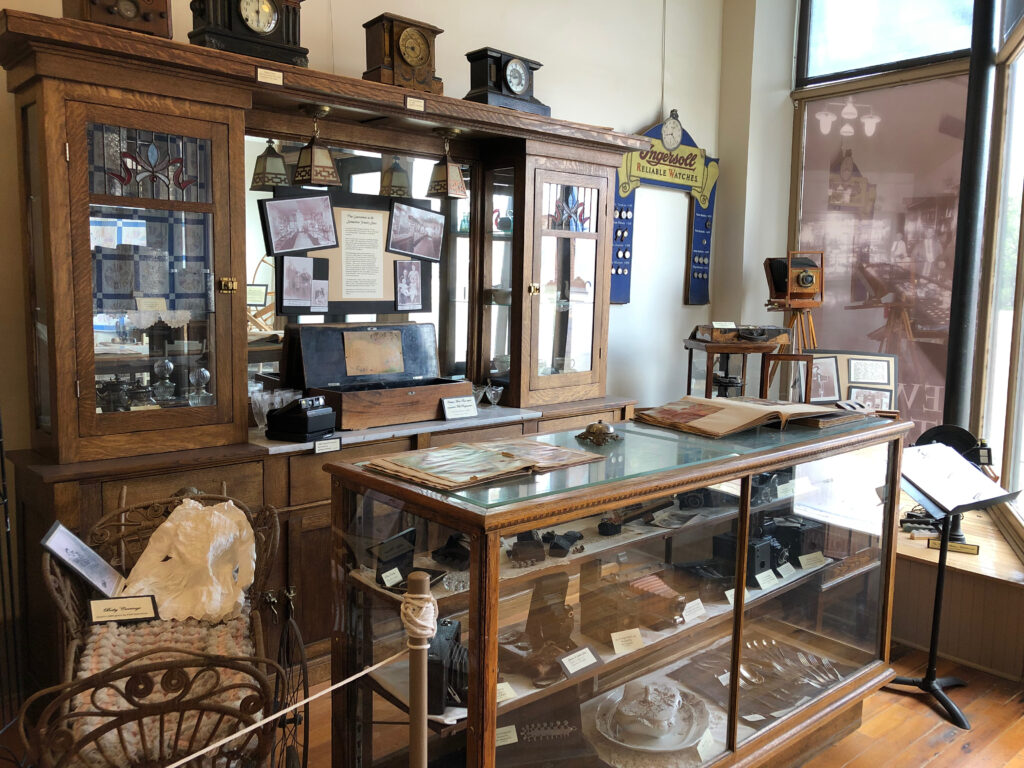
The Independent Order of Oddfellows (IOOF) building was originally designed so the brotherhood could lease the first floor to local businesses. The Samuelson Jewelry Store was its first occupant. The jewelry store remained in business for 79 years, making it the oldest family-owned business in the Arkansas Valley.
Born in Sweden, John E. Samuelson came to America at the age of 16, gaining passage with a promise to be a jeweler’s apprentice. He fulfilled his pledge in Iowa, and then moved to Nebraska where he married and began a family.
They migrated to Las Animas in 1893 and J.E. started his jewelry store. His sons, Paul and Carl, became partners after serving in WWI. The store stayed open until 1972. Through the years, many couples started families by picking out rings from Samuelson’s Jewelry Store.
1880s Telephone Exchange
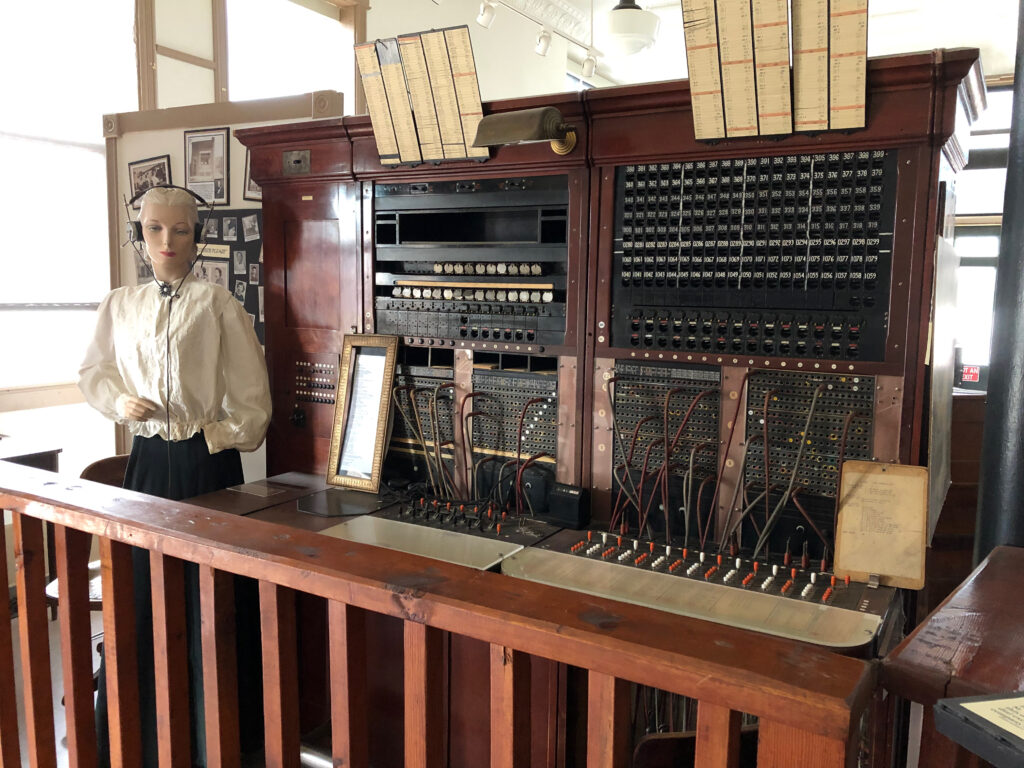
Telephones first came to Bent County in about 1888 with six phone lines running mostly to businesses. The hardware store was #4. Can you spot #6 in our collection of early telephones that are the predecessors of the tiny computers we carry in our pockets today?
Service slowly expanded to more businesses and offices through the 1890s. One rancher even ran phone wires to his ranch headquarters by them along the posts of his barbed wire fence. Finally, in May 1900, Colorado Telephone Company opened the first telephone office. It was a one-position switchboard located in the M.E. Cooke drug store.
By 1926, the exchange had moved and expanded to 14, operators and a manager. This switchboard and a pay phone booth accessible to the public were installed at the new office. The switchboard was not replaced by a dial exchange system until 1962.
Bent County Bank
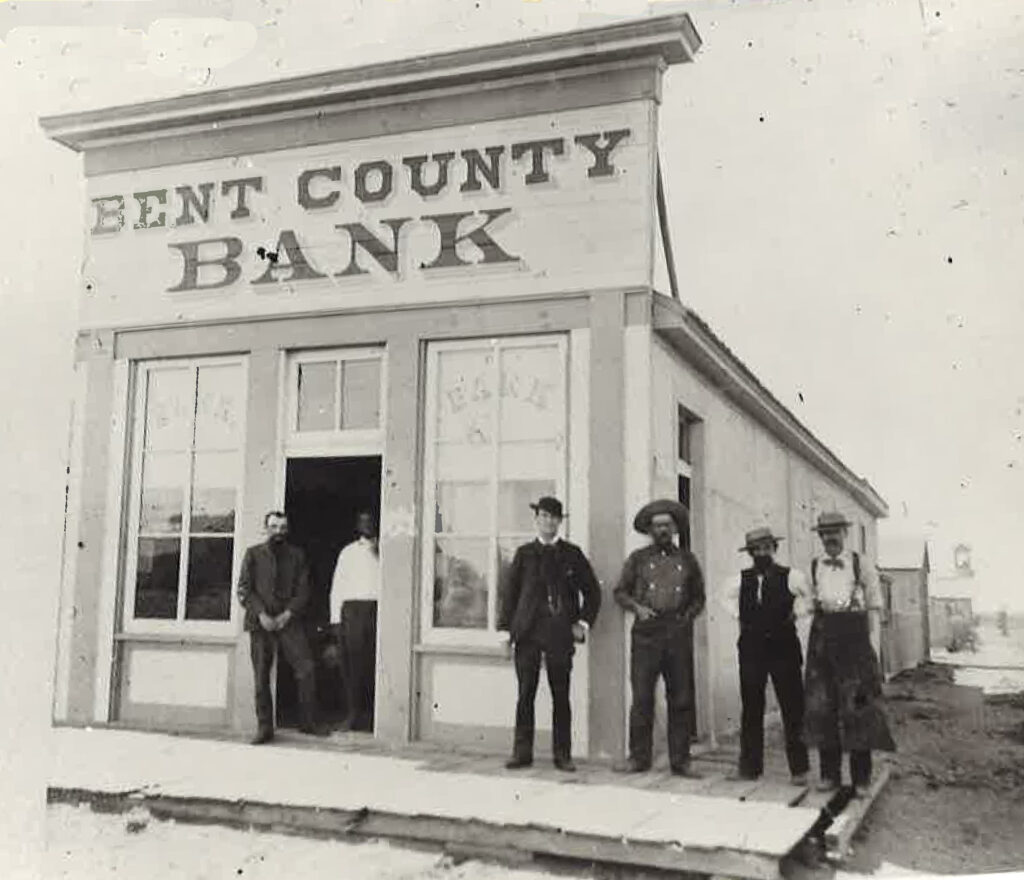
In the summer of 1873, the Arkansas branch of the Kansas Pacific Railroad was extended to Las Animas. As the southern-most point of any railroad at the time, Las Animas became the distribution center for freight destined for the entire southwest as well as for cattle heading to eastern markets. The prairie around town was nearly always covered with ox and mule trains waiting to be loaded. It was a very busy place and badly in need of a bank.
In 1875, citizens organized the Bent County Bank. The founding officers pose proudly in front of its original home – the adobe building with its false façade pictured on our front window. It was the only bank between Pueblo, Colorado and Garden City, Kansas.
In 1898, the bank moved to the IOOF building as its cornerstone occupant. The etched glass and mahogany service counter is the centerpiece of our exhibit along with an 1883 safe containing hand written ledgers from the early 1900s and topped with one of the earliest copier/scanners – Edison’s 1904 drum mimeograph machine. You can also see a hand-operated check cancelling machine and adding machines dating from 1908.
Kathleen Tomlin Memorial Bell Park
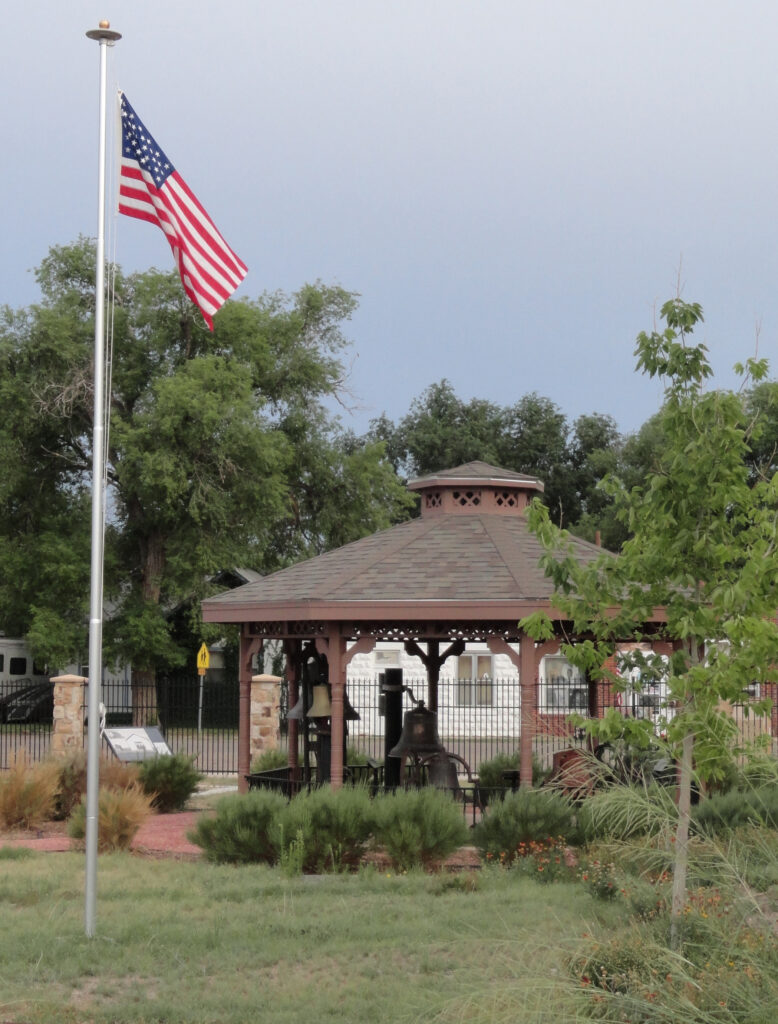
Behind the museum is our lovely courtyard. Today it is home to our outdoor exhibits – but it has its own colorful history.
Young Charlotte “Lottie” Gardner was the first white woman to reside in Granada, Colorado. Her husband died in 1882, leaving her with three small children and no means of support. An excellent cook, the resourceful young woman sent word to the cowboys that if they would just give her two hours’ notice, she would provide a good meal for 25¢ and soon had a thriving business.
The railroad came in 1886 and the town of Granada and most of its businesses moved three miles east. Lottie’s was the only house left. Once again, cowboys came to the rescue, persuading her to move to Las Animas. They took down her house in sections, loaded it aboard a railroad car and packed her household goods into two wagons. Lottie and the children walked to their new home and she began serving meals.
Her success led local leader, Judge Ewell, to finance a hotel and in 1887 she opened The Gardner House on the site that is now Bell Park.
It was a grand two-story building with a porch across the front, rooftop balcony, grass yard, two oil-lit streetlamps and crystal chandeliers. Lodging was $1 a night or $5 for the week. Meals were 35¢ for boarders and 50¢ for others. On July 4th, fireworks were shot on the lawn.
Lottie sold the hotel in 1903 and it became the Park Hotel and later a rooming house. In 1959, fire damaged part of the second story and finally, in 1977, it was condemned by the state. Lottie’s grand hotel was sold for salvage.
Hasty Jail
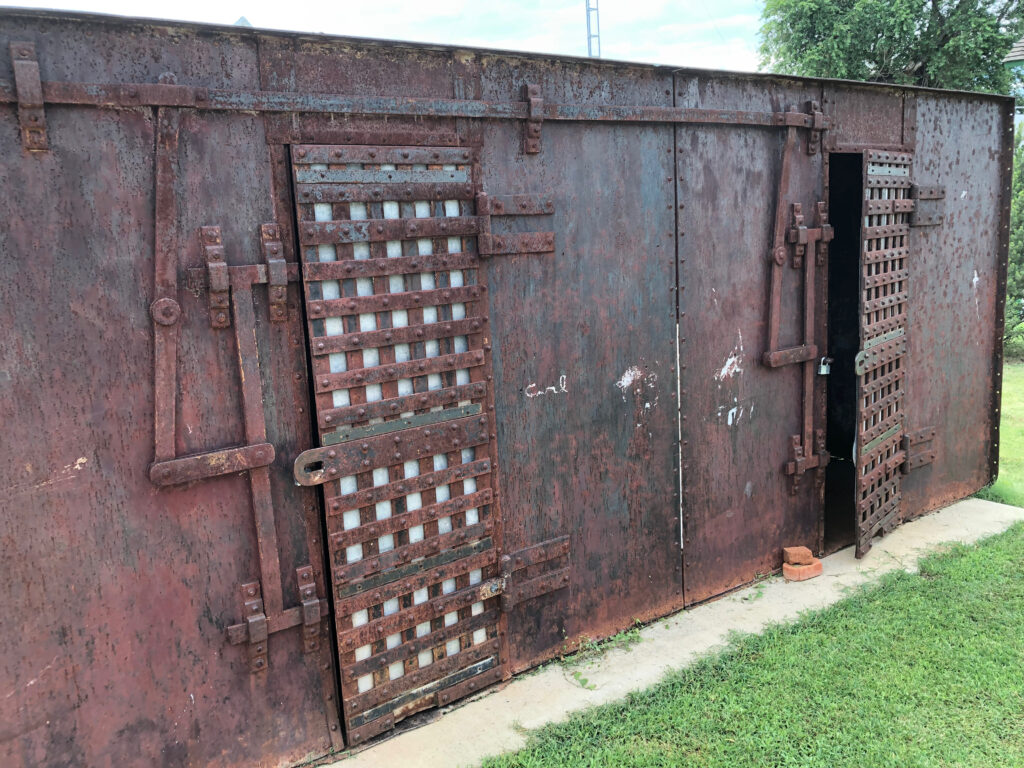
Hasty Colorado was a booming town in the 1940s while nearby John Martin Reservoir was under construction. Men would cash their paychecks, have a few drinks and often get quite wild. This giant steel box –not really a jail but rather a drunk tank – was used to keep them out of trouble while they sobered up. As you can well imagine, the inside could get so hot in summer that a man could die and in winter it was bitterly cold. Nonetheless, parties raged on.
North Gageby School
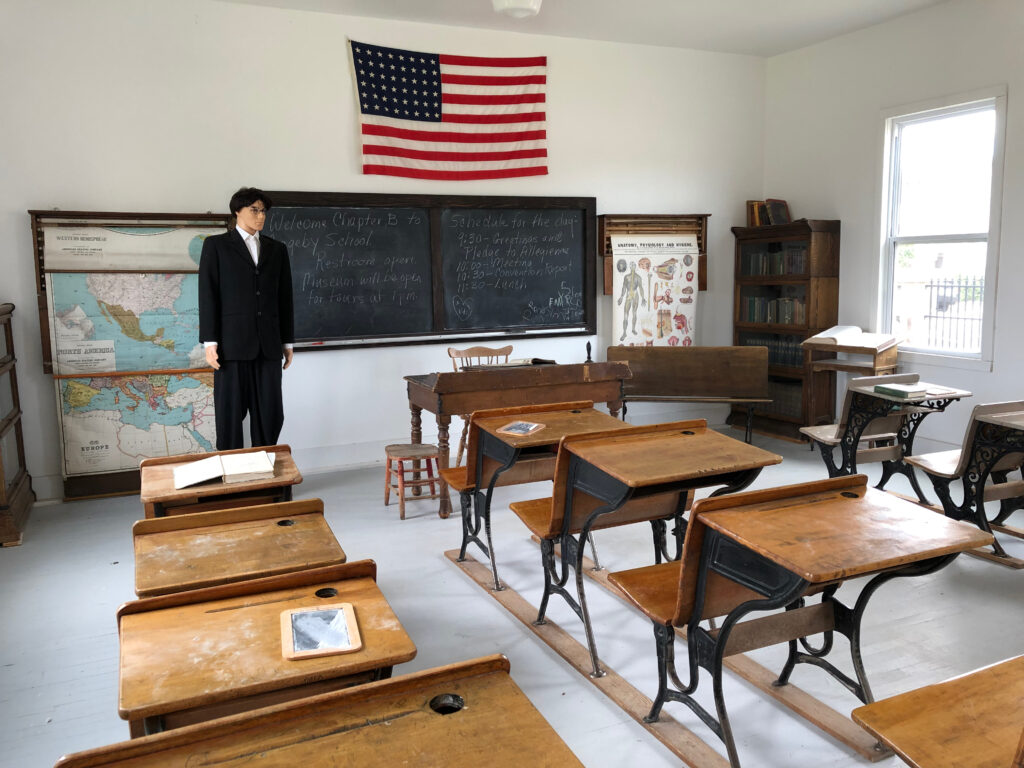
The little one-room schoolhouse was built near Gageby Creek in 1892. The grounds were donated and the original building cost $1200. There were thirteen students and two teachers: Miss Baldwin and Miss McCauley.
Traditionally, the last day of school was awaited with joyful anticipation. After weeks of rehearsal, pupils sang and gave plays and skits. Food was spread on trestle tables. Neighborhood ladies brought their favorite dishes and the men cranked out delicious ice cream. After lunch, students, teachers and families all participated in a fast-moving game of baseball.
The schoolhouse continued to operate, teaching multiple grades in the single room until March 1929. There are still residents in Bent County who began their education in this tiny edifice.
Setchfield Blacksmith Shop
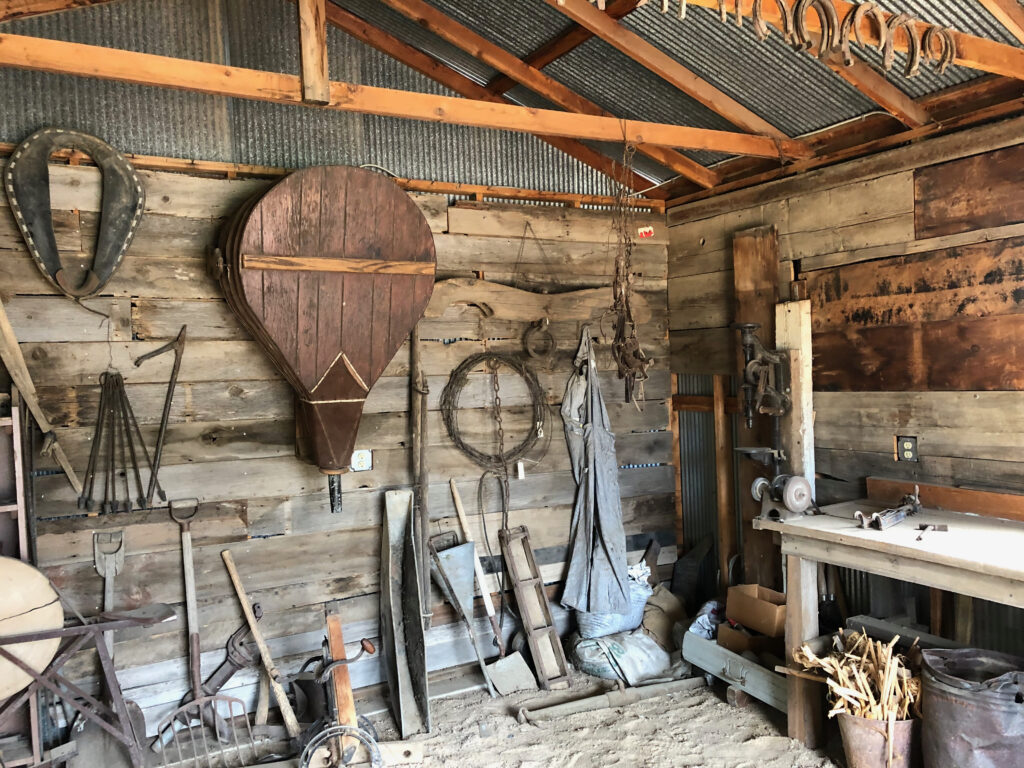
The Setchfield and Field Blacksmith Shop highlights a long line of Colorado blacksmiths. W.T. Setchfield came from England at the age of 16 and opened a blacksmith shop in Durango. Shortly after his son W.J. was born, the family moved to Cripple Creek and re-opened for business.
W.J followed his father into the smithing business and also had a son whom he named W.T. in honor of his father. Family lore has it this next Setchfield was born while a gunfight raged outside and that a stray bullet came through the building and hit a small mirror on the bedroom wall.
In 1909, when the baby was six months old, the family moved to Lamar, and again to Las Animas in 1912, opening shops in both locations. A cousin, George Field, also came on board.
Bill, the third generation blacksmith, began his career in his father’s shop at age five. His job was to shoo flies off horses while his father worked. When his father retired, he took over the business and operated it until 1950 The display showcases a working forge and artifacts from all three generations of Setchfields.
